About EGL
Volunteer Abroad 2007-2010
Cusco, Peru
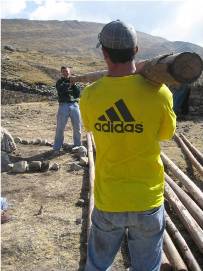
What We Did
A group of 14 EGL’s traveled to Peru to work on building healthier and more efficient cook stoves and a weavers hut for a rural village. The group traveled to the rural village of Chupani which is located in the Andes northwest of the tourist city of Cusco. To get to the village, the EGL’s first started in Lima and took a two hour flight to Cusco (elevation ~11,000 ft). After acclimating to the elevation in Cusco for several days, the EGL’s took a four hour mini bus ride towards Chupani. Eventually, the road ended and the EGL’s hiked the remaining eight miles through the Andes to the village of Chupani (elevation ~13,000 ft). Upon arriving in Chupani, the EGL’s quickly realized that Chupani was very different from Ann Arbor. The group stayed in two stone huts with straw roofing and slept on alpaca hides for the five nights in the village. Meals consisted of potatoes, more potatoes and potato soup. The group got to bed at about 7pm every night in order to wake up early and work hard on the volunteer work.
 The first day of volunteer work consisted of some of the most grueling work any of the EGL’s had ever done. The EGL’s had to walk to a nearby village (4-5 miles away) to pick up some logs to be used in the village to build the weavers hut. The logs weighed between 40-80 lbs and were carried by two EGL’s each for the 5 mile hike. When we all finally returned with our logs, we were ready for some potatoes!
The first day of volunteer work consisted of some of the most grueling work any of the EGL’s had ever done. The EGL’s had to walk to a nearby village (4-5 miles away) to pick up some logs to be used in the village to build the weavers hut. The logs weighed between 40-80 lbs and were carried by two EGL’s each for the 5 mile hike. When we all finally returned with our logs, we were ready for some potatoes!
 On day two, the EGL’s worked on building the weavers hut. This was to be a circular stone building for the women of the village to use as a communal place to weave garments. The goal was to give the women more of an income through selling their garments. This income will allow them to have more bargaining power in the family in a very patriarchal society. The work we did on day two was also very grueling. We were tasked to bring stones (rocas) from the surrounding areas to the hut. Then, with the help of the locals, the stones were used to build the hut. The group also had to make “mud(barro)” to use as mortar between the rocks. We continued building the hut during our spare time for the duration of the trip.
On day two, the EGL’s worked on building the weavers hut. This was to be a circular stone building for the women of the village to use as a communal place to weave garments. The goal was to give the women more of an income through selling their garments. This income will allow them to have more bargaining power in the family in a very patriarchal society. The work we did on day two was also very grueling. We were tasked to bring stones (rocas) from the surrounding areas to the hut. Then, with the help of the locals, the stones were used to build the hut. The group also had to make “mud(barro)” to use as mortar between the rocks. We continued building the hut during our spare time for the duration of the trip.
Starting on day three, we split into teams and began to assemble the cook stoves in the villager’s huts. The stoves were designed by a fellow EGL student, Rob Cerato, who spent the previous year installing these stoves in Peru. The stoves were made with a mix of sand and clay. Additionally, re-rod and sheet metal were used in the stoves construction. All of the materials were meant to be easily sourceable in Peru to make the project sustainable. We continued building the stoves for the rest of the trip.
Impact
The group of students left a lasting impact on the village of Chupani. The group was able to assemble four cook stoves and complete the base of the weavers hut during our five day stay. We were also able to transfer the knowledge of how to make these healthier stoves to the villagers. The stoves create a 90% reduction of smoke and carbon monoxide in the home which leads to an increase in lifespan of 10-15 years per person. Additionally these stoves are more efficient and consume up to 60% less fuel. Finally, the villagers really like the cook stoves because they cook faster than their previous stoves.
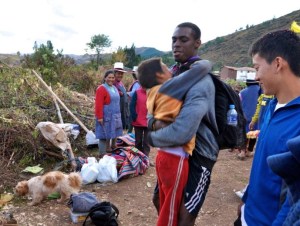
Takeaways
On the trip, the group of EGL’s bonded and also learned a great deal about a new culture. Some students had never left the country before. Some students did not speak any Spanish. Some students had never met any other EGL’s before. But by the end of the trip we had all become friends and had all been able to see the world from a new perspective. Many of the EGL’s gained a greater appreciation of all of the things that they had back in Ann Arbor while experience life in Chupani. The experience was a life changing one for everyone involved.
Antigua, Guatemala – 2009
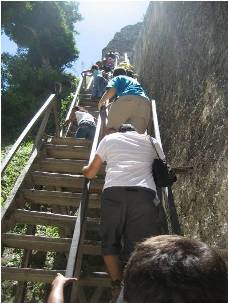
What We Did
EGL representatives journeyed to the still politically unsettled Guatemala with hopes to improve radio communications to reach and enhance the lives of less-fortunate citizens in rural areas. Arriving in Antigua, the former capital city of Guatemala, ten EGLs began their expedition in the Spanish influenced, Central American picturesque city. The next morning they boarded their trusty chariot (bus) to begin a two day voyage to Tikal. After the first stop in Livingston, the EGLs caught a ride in the bed of one 30 year old pickup to Los Siete Altares. At “the Seven Alters,” they climbed and jumped off of all seven levels of pools and cascades. The next night was spent gazing at the most intense view of the Milky-Way ever seen by the students in Rio Dulce before leaving early in the morning for Tikal. Tikal is one of the largest sites of ancient Mayan ruins and provided the perfect backdrop for adventurous pictures as the students climbed 60% grade staircases to the tops of temples. The chariot returned the EGLs to Antigua after spending a night at a floating hostel in the jungle along the Rio Dulce river.
 The EGLs next journeyed to Xela for the volunteer project. The first day included a visit to hot springs and orientation with Casa Sito—the organization another Michigan engineer connected them to and was volunteering at. Next began five strenuous days of work excavating the site for and building the foundation of a new building to house the radio station for the rural areas. Radio served as the only means people of the rural villages in Guatemala had for connecting to civilization and being informed of current events, particularly political issues. Having only recently come out of extreme political unrest, Guatemalans still suffered some injustices, including the fact that all the radio stations are owned by governmental or other organizations. Thus the EGLs were technically helping to promote illegal activity in order to benefit the rural communities. The leader of the Mujb’ab’l yol radio community, Tino, worked closely with the students in their work in the village. Having been a guerrilla in the war himself, Tino shared many stories with the EGLs and took an entire day to help them understand how the country of Guatemala had suffered over the years. The students and Tino’s family climbed the three hour hike to Lake Chichabal, the sacred lake in the crater of a volcano, believed to be the center of the universe to ancient Mayans. Here EGLs and their new family learned the life of guerrillas living in the jungle and shared a meal that would have been eaten by Tino and his comrades during the civil war.
The EGLs next journeyed to Xela for the volunteer project. The first day included a visit to hot springs and orientation with Casa Sito—the organization another Michigan engineer connected them to and was volunteering at. Next began five strenuous days of work excavating the site for and building the foundation of a new building to house the radio station for the rural areas. Radio served as the only means people of the rural villages in Guatemala had for connecting to civilization and being informed of current events, particularly political issues. Having only recently come out of extreme political unrest, Guatemalans still suffered some injustices, including the fact that all the radio stations are owned by governmental or other organizations. Thus the EGLs were technically helping to promote illegal activity in order to benefit the rural communities. The leader of the Mujb’ab’l yol radio community, Tino, worked closely with the students in their work in the village. Having been a guerrilla in the war himself, Tino shared many stories with the EGLs and took an entire day to help them understand how the country of Guatemala had suffered over the years. The students and Tino’s family climbed the three hour hike to Lake Chichabal, the sacred lake in the crater of a volcano, believed to be the center of the universe to ancient Mayans. Here EGLs and their new family learned the life of guerrillas living in the jungle and shared a meal that would have been eaten by Tino and his comrades during the civil war.
 The chariot next took the EGLs back to Antigua to wrap up the adventure. The last day included one last exhilarating hike up the side of an active volcano. After breathtaking photographs, running full-bore down the side of the volcano, and nursing at least one student’s scrapes, the EGLs returned to pack their bags and spend one last beautiful night absorbing the views, language, and culture that surrounded them with their EGL friends.
The chariot next took the EGLs back to Antigua to wrap up the adventure. The last day included one last exhilarating hike up the side of an active volcano. After breathtaking photographs, running full-bore down the side of the volcano, and nursing at least one student’s scrapes, the EGLs returned to pack their bags and spend one last beautiful night absorbing the views, language, and culture that surrounded them with their EGL friends.
Impact
The students helped to bring justice to less-fortunate Guatemalans through their work with the Mujb’ab’l yol radio community. The political unrest that continued even after the civil war had ended is still very strong in the country and radio is the only way for rural areas to hear of current events. Through helping to build the foundation for the new radio station building, the EGLs were able to contribute to relevant news being shared with communities throughout the poorest parts of Guatemala. The EGLs also shared their spirit with the people in the communities; rest assured that the Michigan Fight Song was indeed sung on Guatemalan radio that week!
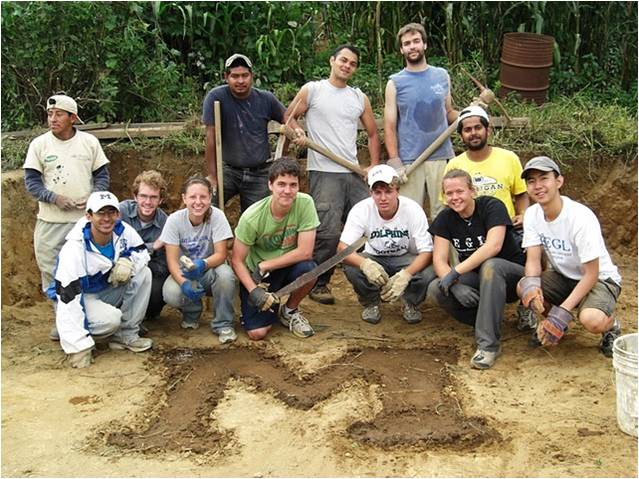
Takeaways

EGL student on the trip not only saw some of the most awe-inspiring spectacles in Central America, they were able to become educated on the political unrest of nations in the area. The EGLs were completely immersed in the culture and family-like atmosphere of Guatemala. Some of the most prevalent takeaways from the trip were the bonds that were forged between the EGL members, the enthusiasm for world travel, and the excitement to become more involved in the EGL society.
San Jose & La Tortuga Feliz, Costa Rica – 2008

 In August 2008, 14 EGLs embarked on the annual volunteer abroad trip. The goal of this year’s trip: to save sea turtles. Our journey began in San Jose, Costa Rica, where we enjoyed a rooftop view from our hostel, playing cards and telling stories. The next day we explored the city’s surroundings, visiting a coffee plantation, climbing to a volcanic lake, and walking through the jungle, alongside waterfalls.
In August 2008, 14 EGLs embarked on the annual volunteer abroad trip. The goal of this year’s trip: to save sea turtles. Our journey began in San Jose, Costa Rica, where we enjoyed a rooftop view from our hostel, playing cards and telling stories. The next day we explored the city’s surroundings, visiting a coffee plantation, climbing to a volcanic lake, and walking through the jungle, alongside waterfalls.
The next day we left for La Tortuga Feliz (The Happy Turtle). A bus ride, taxi ride, and boat ride later, we were there. After a quick orientation, we were ready to save turtles. At night, we would patrol the beach with the ticos (locals), using our red flashlights to search for turtles, in the hope of finding them before the poachers. Once found, we’d stay with the turtles until they returned to the water. We’d collect the eggs they laid, and take them to the hatchery where they could be looked until they hatched. During the day we did odd jobs, and occasionally went so far as to employ our engineering prowess – building a new door for the hatchery, using collected branches and twine. With our time off we read in hammocks, taught each other card games, played soccer with the locals, and caught up on lost sleep from the night before.
After leaving La Tortuga Feliz, a boat ride, taxi ride, and bus ride later, we were white water rafting through the jungle. After rafting we returned to San Jose. At this point, our group split – half of us heading for a zip lining experience through the jungle canopy, and half of us heading to Jaco. We reunited in Jaco, returned to San Jose, and then returned home – two weeks after we left, and a few hundred turtle eggs rescued.
Quito, Ecuador – 2007
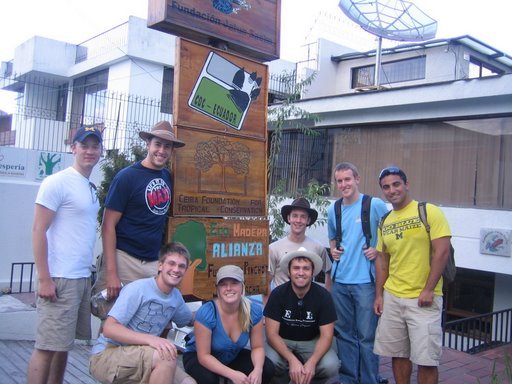
 The first annual EGL Volunteer Abroad trip took place from August 13th to August 30th, 2007. Eight EGL students took part on the trip to the Galapagos Islands, where they volunteered on a reserve to help preserve the indigenous and endemic plants and animals of the islands.
The first annual EGL Volunteer Abroad trip took place from August 13th to August 30th, 2007. Eight EGL students took part on the trip to the Galapagos Islands, where they volunteered on a reserve to help preserve the indigenous and endemic plants and animals of the islands. The trip started by flying to Quito, Ecuador, where they acclimated themselves to the climate and participated in a short orientation. Then they flew to the Galapagos Islands, where for 10 days they helped conservationists on the reserve Jatun Sacha on the island of San Cristobal. Activities included removing the invasive vegetation from the reserve, planting the native wildlife in its place, and growing plants in the nursery. The grouped stayed in cabins on the reserve, and spent their free time hiking around the island and playing cards, soccer, and pool at the “near bar.”
The trip started by flying to Quito, Ecuador, where they acclimated themselves to the climate and participated in a short orientation. Then they flew to the Galapagos Islands, where for 10 days they helped conservationists on the reserve Jatun Sacha on the island of San Cristobal. Activities included removing the invasive vegetation from the reserve, planting the native wildlife in its place, and growing plants in the nursery. The grouped stayed in cabins on the reserve, and spent their free time hiking around the island and playing cards, soccer, and pool at the “near bar.”
During the middle weekend, the group took a taxi into the local beach town to relax and unwind. After volunteering for 10 days, the group took a 4 day tour of the other islands. They were able to see a variety of wildlife and a diverse array of landscapes, and had a great time while doing it. After the 4 day trip, the group flew back to Quito for a night before returning to the US.

Stacie Edington
Honors Location:
251 Chrysler Center
2121 Bonisteel Blvd.
Ann Arbor, MI 48109-2092
Hours:
Monday – Friday
8:30 AM – 12:00 PM EST
1:00 PM – 5:00 PM EST
Virtual Walk-In Peer Advising Hours:
Monday – Friday
1:30 PM – 4:30 PM EST
(September – April)
Contact Us:
Email: coehonors@umich.edu
Phone: (734) 763-0505
